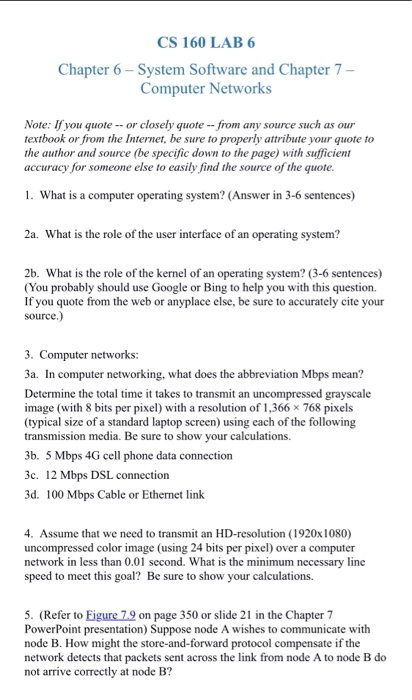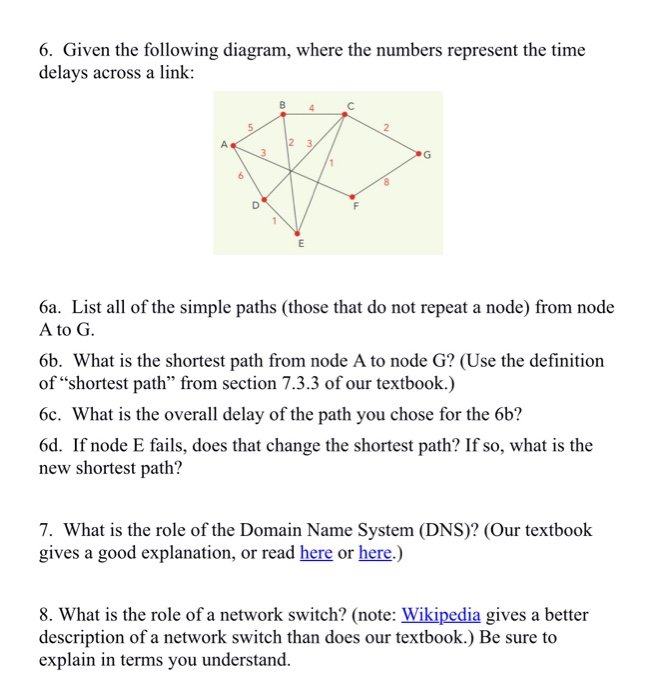CS 160 LAB 6 Chapter 6 - System Software and Chapter 7 - Computer Networks Note: If you quote -- or closely quote -- from any source such as our textbook or from the Internet, be sure to properly attribute your quote to the author and source (be specific down to the page) with sufficient accuracy for someone else to easily find the source of the quote. 1. What is a computer operating system? (Answer in 3-6 sentences) 2a. What is the role of the user interface of an operating system? 2b. What is the role of the kernel of an operating system? (3-6 sentences) (You probably should use Google or Bing to help you with this question If you quote from the web or anyplace else, be sure to accurately cite your source.) 3. Computer networks: 3a. In computer networking, what does the abbreviation Mbps mean? Determine the total time it takes to transmit an uncompressed grayscale image (with 8 bits per pixel) with a resolution of 1,366 x 768 pixels (typical size of a standard laptop screen) using each of the following transmission media. Be sure to show your calculations. 3b. 5 Mbps 4G cell phone data connection 3c. 12 Mbps DSL connection 3d. 100 Mbps Cable or Ethernet link 4. Assume that we need to transmit an HD-resolution (1920x1080) uncompressed color image (using 24 bits per pixel) over a computer network in less than 0.01 second. What is the minimum necessary line speed to meet this goal? Be sure to show your calculations. 5. (Refer to Figure 7.9 on page 350 or slide 21 in the Chapter 7 PowerPoint presentation) Suppose node A wishes to communicate with node B. How might the store-and-forward protocol compensate if the network detects that packets sent across the link from node A to node B do not arrive correctly at node B? 6. Given the following diagram, where the numbers represent the time delays across a link: 6a. List all of the simple paths (those that do not repeat a node) from node A to G 6b. What is the shortest path from node A to node G? (Use the definition of "shortest path from section 7.3.3 of our textbook.) 6c. What is the overall delay of the path you chose for the 6b? 6d. If node E fails, does that change the shortest path? If so, what is the new shortest path? 7. What is the role of the Domain Name System (DNS)? (Our textbook gives a good explanation, or read here or here.) 8. What is the role of a network switch? (note: Wikipedia gives a better description of a network switch than does our textbook.) Be sure to explain in terms you understand








